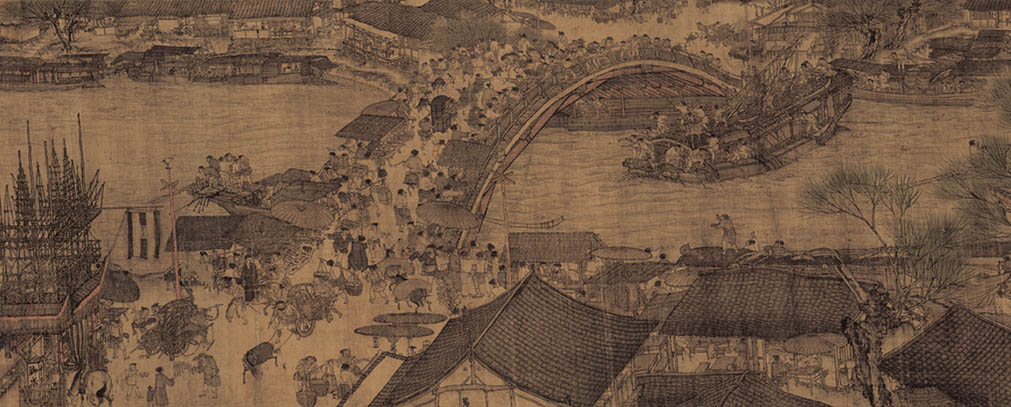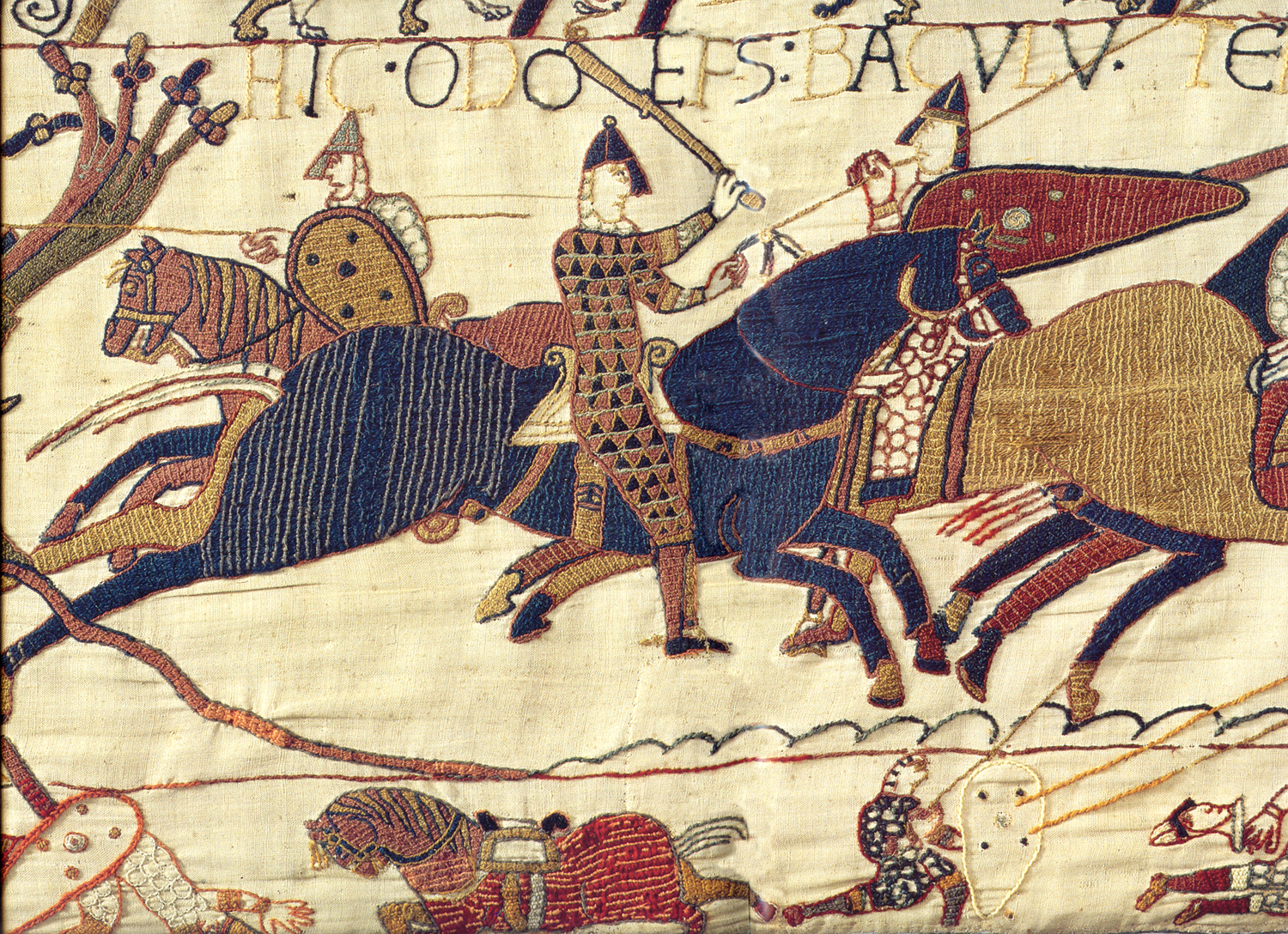Art makes it (too) easy to compare civilisations.
As you enter Taipei's National😉 Palace Museum (國立故宮博物院) you go through a room which surrounds you with a timeline of the art of different cultures at the same different points in history. Though nothing really prepares you for the firehose of history that follows in the main exhibits, twirling clockwise and taking some of it in helps you brace yourself.
I'm going to attempt something similar: a three-culture snapshot of circa 1000AD.
The Qingming Scroll (1085-1145)
Qing Ming Shang He Tu 清明上河圖 - Song Dynasty - Monochrome ink on silk
View the full scroll here.
Heading westwards ...
Mosaic of Emperor Constantine (c. 1050)
 |
In case you haven't guessed, it's in Constantinople (Istanbul) in the Hagia Sophia. (Though this Constantine - Constantine IX Monomachos - is not the one the city was named after.)
Heading westwards again...
The Bayeux Embroidery (c 1070)
Tapisserie de Bayeux - Romanesque period embroidery - Normandy
Three images. Three cultures. I bet you've already made your own comparisons.
But if you're interested in a few further points ...
1000 paints a picture?
The Bayeux tapestry has been held up as one of the supreme achievements of the Norman Romanesque. Certainly it was a big deal in my childhood textbooks, where 'world history' meant 'Western history'.
In light of the other works though, that seems like ...
Why did the western works use such laborious mediums? Mortar, stones, needles (ouch), thread? It's because they didn't have silk or paper. The materials in use say as much about sophistication as do the intricacy of the techniques. Technology actually took time to spread.
Subject matter also hints at attitudes and access to resources. The Byzantine Mosaic and the Bayeux Embroidery depict famous people and events; an emperor and a war respectively. In contrast, the artist of the Qingming Scroll, 張擇端 (Zhang Zeduan), paints everyday life centuries before Impressionists thought it was cool.
If you had to choose where to live between Turkey, China, or England today in 2022, you'd probably pick England. However, that choice would probably be turned on its head in 1000AD. The safe play would have been China.
But that wouldn't last.
Sic Transit Gloria Mundi
Or, "Past performance doesn't predict future returns."
Though lifelike, the everyday scene in the Qingming scroll was a fictionalised, idealised one. The Song dynasty was declining. The Scroll may have even been painted in memoriam, after the fall to the barbarous Jin in 1126; a reminder of the before-times.
Constantine IX is considered Byzantium's last effective ruler, and presided over the Orthodox church's great Schism.
In contrast, though the Norman Conquest was catastrophic for Anglo-Saxon elites, it was good news for the soon-to-be-freed slaves of said elites. Once William the Conqueror consolidated power, the region would be stable for about 150 years.
Will places get turned on their head again? Or is that a projection that is no longer reasonable because we're in a long, stable boom™?
You tell me. Paint me a picture.



Comments
Post a Comment